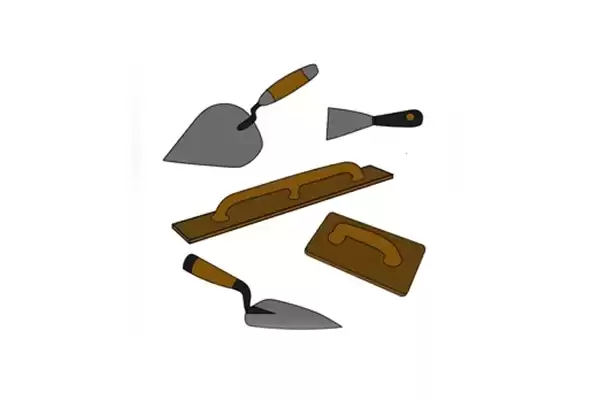In the world of construction and home improvement, plastering is a vital skill that ensures walls and ceilings have a smooth, finished look. This process involves applying plaster over surfaces to create a durable, aesthetically pleasing finish. But what tools are essential for this craft? This article delves into the key tools used for plastering, highlighting the indispensable plasterer tool that every professional and DIY enthusiast should know about.
The Essential Plasterer Tools
1. Trowel
The trowel is arguably the most critical tool for any plasterer. It is used to apply and spread plaster evenly across surfaces. Trowels come in various sizes and shapes, but the most commonly used in plastering is the rectangular steel trowel. The blade is typically made of stainless steel to prevent rusting and ensure a smooth application. A comfortable handle is also crucial, as plastering can be a physically demanding job.
2. Hawk
A plasterer’s hawk is a flat, square tool with a handle underneath, used to hold and transport plaster from the mixing area to the application site. It allows the plasterer to hold a significant amount of plaster and apply it to the wall or ceiling with a trowel. The hawk is essential for efficiency and speed, enabling the plasterer to work continuously without frequent trips to the mixing area.
3. Float
The float is another vital plasterer tool, used to smooth and level the plaster after it has been applied. There are different types of floats, including wooden, plastic, and sponge floats. Each type serves a specific purpose, such as creating a textured finish or ensuring a perfectly smooth surface. The float helps eliminate any trowel marks and ensures an even, professional finish.
4. Plastering Brush
A plastering brush is used for several purposes, including dampening the surface before plaster application, cleaning tools, and finishing the plastered surface. A dampened surface helps the plaster adhere better, and the brush can also be used to create various textures and finishes.
5. Mixing Tools
Proper mixing of plaster is crucial for achieving the right consistency. Mixing tools, such as a drill with a mixing paddle attachment or a dedicated plaster mixer, are essential for this task. These tools ensure that the plaster is thoroughly mixed, free of lumps, and ready for application.
6. Straight Edge or Darby
A straight edge, also known as a darby, is used to check the flatness of the plastered surface and remove any excess plaster. This tool helps in achieving a uniform thickness and a smooth finish. It is typically a long, flat piece of metal or wood that is drawn across the plastered surface to level it.
Specialty Tools for Detailed Work
7. Corner Trowel
A corner trowel is designed specifically for finishing corners. It has a unique shape that allows the plasterer to achieve crisp, clean corners with ease. This tool is indispensable for detailed work and ensures that every angle is perfect.
8. Jointing Knife
A jointing knife is used for applying plaster to joints and seams. It is a smaller tool, typically with a flexible blade, allowing for precision work in tight areas. It is also used for taping drywall joints and applying finishing coats.
Importance of Quality Tools
Using high-quality plasterer tools is essential for achieving a professional finish. Poor-quality tools can lead to uneven application, tool marks, and a less durable finish. Investing in good tools not only improves the quality of work but also makes the plastering process more efficient and less physically taxing.
Conclusion
Plastering is an art that requires skill, experience, and the right tools. From the essential trowel and hawk to specialized tools like the corner trowel and jointing knife, each plasterer tool plays a crucial role in the plastering process. Whether you are a professional plasterer or a DIY enthusiast, understanding and using these tools correctly can make a significant difference in the quality of your work. By investing in high-quality tools and mastering their use, you can achieve smooth, durable, and aesthetically pleasing plaster finishes that stand the test of time.
Post time: Jul-25-2024







